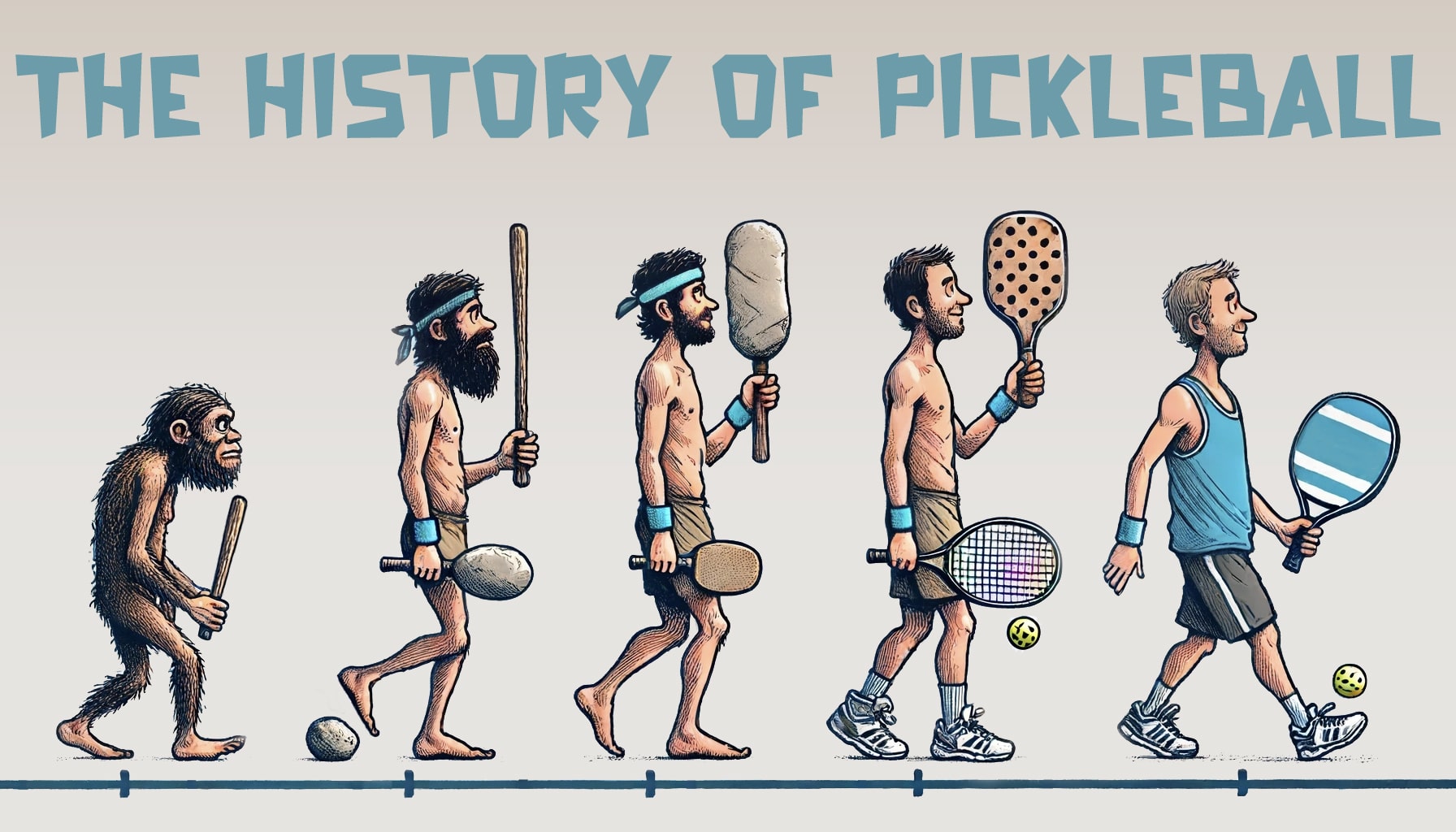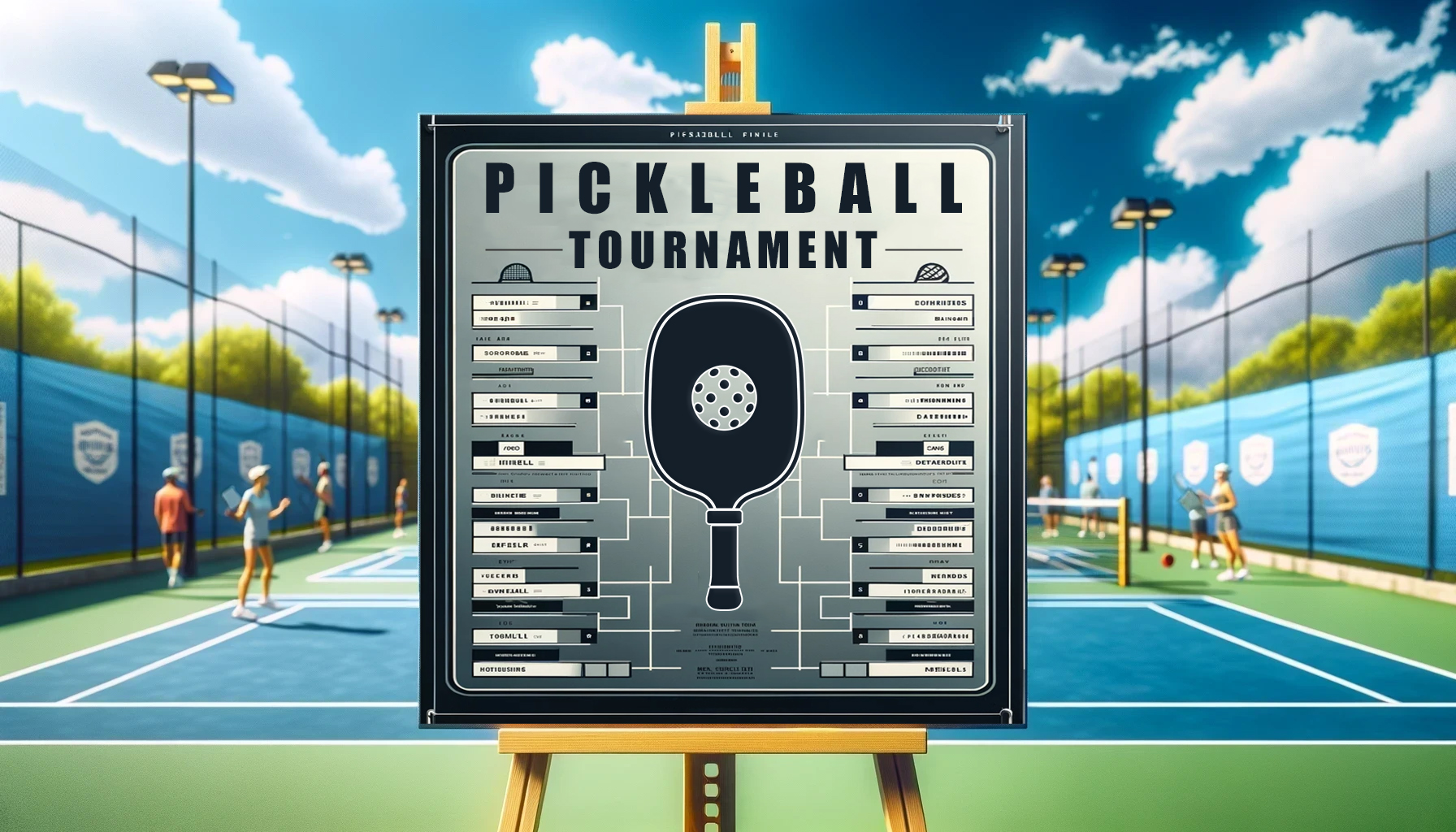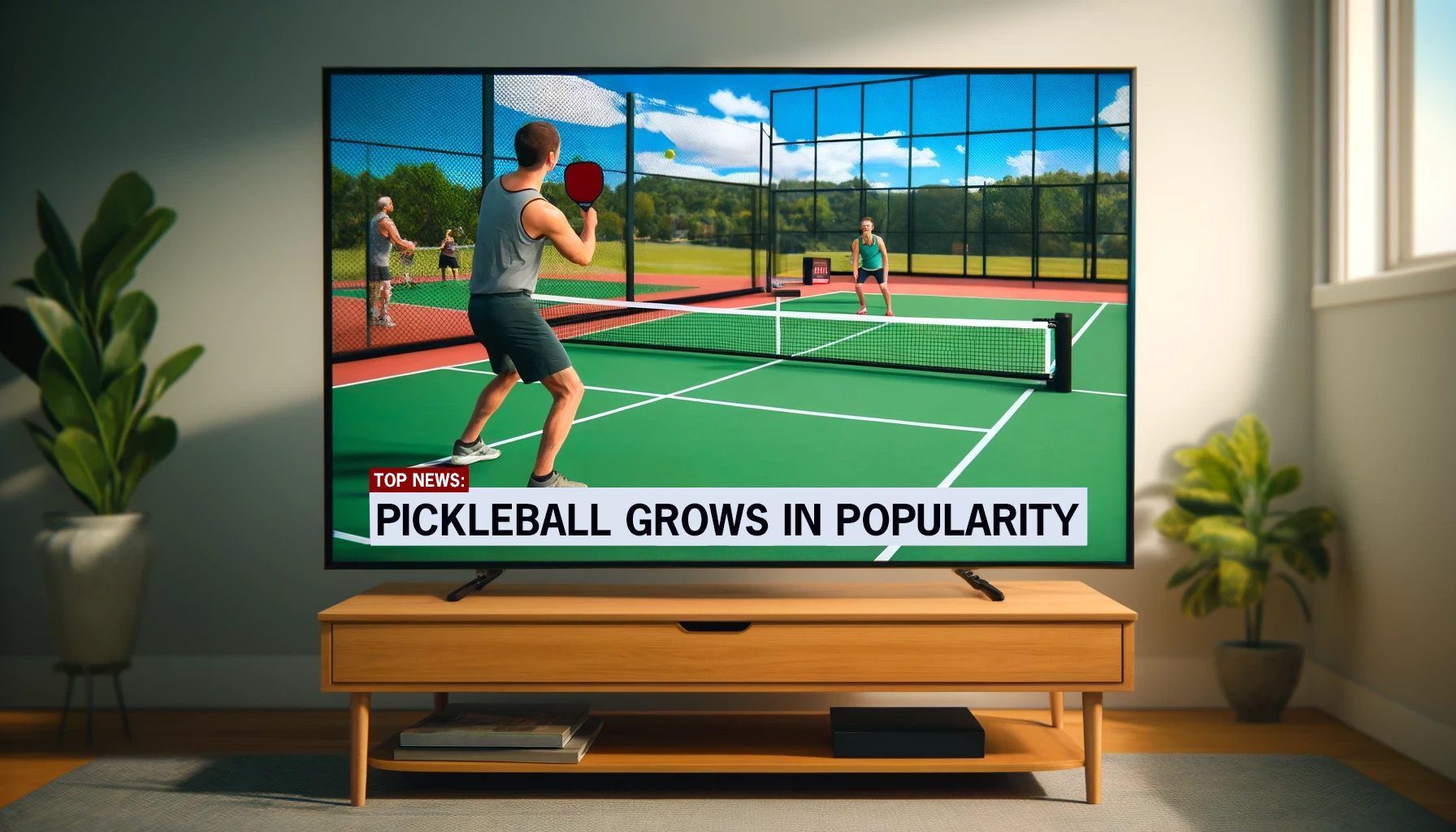
Exploring the History of Pickleball
There is a sport rapidly growing in popularity, a sport that's seen a 650% increase in participation over the last six years. That sport is pickleball: a lively racket game sweeping the country and captivating players of all ages with a unique blend of simplicity and fun. What exactly is pickleball? At its core, pickleball is a "mash-up" of tennis, badminton, and table tennis, featuring a simplified court and easy-to-use equipment that encourages quick, enjoyable play. What began as a simple family game has become a vibrant sport with a rich and exciting history, embodying community-oriented and inclusive values.

The Origins of Pickleball
Pickleball was born in the summer of 1965 on Bainbridge Island, Washington. Joel Pritchard, a congressman from Washington, Bill Bell, a successful businessman, and their friend Barney McCallum found themselves trying to entertain their families on a lazy afternoon. With no badminton equipment, they improvised by using ping-pong paddles and a perforated plastic ball, creating a game that could be played on an old badminton court. What started as a way to pass the time quickly became a favorite pastime for their families and friends. The game's easy-to-learn nature and engaging play style made it an instant hit.
Key Milestones in Pickleball's History
1965: Birth of Pickleball
Pritchard, Bell, and McCallum invented pickleball on Bainbridge Island as a fun summer activity for their families. They used what they had at hand: ping-pong paddles and a perforated plastic ball on a badminton court. The simplicity of the game's rules and equipment made it accessible to everyone, fostering a community spirit that would become central to the sport's appeal.
1972: First Permanent Court
The first permanent pickleball court was built in the backyard of Bob O'Brian, a neighbor and friend of Pritchard. This marked the beginning of pickleball's transition from a casual backyard game to a more formalized sport. Establishing a dedicated court allowed for more structured play and laid the groundwork for the sport's expansion beyond informal settings.
1975: National Awareness
An article in "The National Observer" introduced pickleball to a broader audience, significantly increasing its popularity. This coverage helped spread the game beyond the local community, attracting interest from various parts of the country. The article highlighted the game's unique blend of simplicity and competitive fun, sparking curiosity and enthusiasm among readers.

1976: First Pickleball Tournament
The South Center Athletic Club in Tukwila, Washington, hosted the first known pickleball tournament. This event marked pickleball's emergence as a competitive sport and set the stage for future organized play. The tournament attracted players from different areas, displaying the growing interest in the sport and highlighting its potential for competitive play.
1984: Formation of USAPA
The USA Pickleball Association (USAPA) was established in 1984 to standardize the rules and support players and tournaments nationwide. This organization played a crucial role in formalizing and promoting the sport across the United States. The USAPA's efforts in organizing tournaments, developing training programs, and providing resources for players helped establish pickleball as a recognized sport with a dedicated community.
1990: Nationwide Popularity
By 1990, pickleball had spread to all 50 states, becoming a beloved local sport nationwide. This widespread adoption highlighted the game's broad appeal and its ability to bring communities together. Local clubs and community centers began incorporating pickleball into their recreational programs, further fueling its growth and popularity.
2001: Official Rulebook
The USAPA published the first official rulebook, providing a standard set of guidelines for tournaments and play. This publication was essential in ensuring consistency and fairness in the sport. The rulebook covered everything from court dimensions and equipment specifications to gameplay rules and scoring, providing a comprehensive framework for organized play.

2003: International Expansion
The formation of the Canadian Pickleball Association marked the beginning of pickleball's international appeal. The game started to gain traction in other countries, showcasing its universal appeal. Canadian players embraced the sport, and the association began organizing national tournaments and promoting pickleball across the country.
2005: First National Tournament
The USAPA hosted the first national pickleball tournament, attracting players across the United States. Held in Buckeye, Arizona, this event marked a significant milestone in the sport's development. The national tournament provided a platform for players to compete at a higher level, and it drew attention from media and sponsors, further boosting pickleball's profile.

2009: Organizational Growth
The USAPA restructured to support the sport's continued growth, refining its model and formalizing regional structures. This reorganization helped manage the increasing number of players and events. The creation of regional chapters allowed for more localized support and development, ensuring that pickleball could continue to grow sustainably.
2010: Introduction of Pickleball Ambassadors
In 2010, the USAPA introduced the Pickleball Ambassadors program, enlisting volunteers to promote the sport in their local communities. These ambassadors played a crucial role in spreading awareness, organizing events, and providing guidance to new players. The program significantly contributed to the sport's grassroots growth and helped build a strong, supportive community of pickleball enthusiasts.
2013: Media Spotlight
In 2013, NBC News aired a feature on pickleball, highlighting its emergence as a mainstream sport. This media exposure brought pickleball to a larger audience and helped cement its place in popular culture. The feature showcased the sport's fun, inclusive nature and appeal to people of all ages, sparking interest and participation.

2015: European Championship
The first European Pickleball Championship was held, further cementing the sport's global presence. This event marked a significant milestone in pickleball's international growth. European players embraced the sport, and the championship attracted participants from multiple countries, highlighting pickleball's expanding reach and international appeal.
2016: Major Sponsorships
Major brands began to recognize the growing popularity of pickleball and started sponsoring tournaments and events. This influx of sponsorships provided financial support for the sport's development and helped raise its profile. The involvement of well-known brands also brought additional media attention, attracting new players and fans to pickleball.
2018: Record Participation
The USAPA reported over 3 million players in the United States, demonstrating the sport's explosive growth. This milestone reflected the increasing popularity and widespread acceptance of pickleball. The rapid growth in participation was driven by the sport's accessibility, the efforts of local clubs and ambassadors, and the increasing visibility through media and sponsorships.
2020: Adaptation to COVID-19
Despite the challenges posed by the COVID-19 pandemic, pickleball continued to grow. The sport adapted to social distancing guidelines, with players finding ways to enjoy the game safely. The outdoor nature of pickleball and its ability to be played with minimal physical contact made it a popular choice for those seeking safe recreational activities during the pandemic.
Establishing the Rules and Standards
The initial rules of pickleball were simple, designed to fit the makeshift court and mixed equipment used by its founders. Players used table tennis paddles, a lower net, and a perforated plastic ball. One of the most distinctive features introduced was the non-volley zone, or "kitchen," which prevents players from dominating the game with close-range smashes. This rule encourages strategic play and makes the game accessible to players of all skill levels.
Over time, these rules evolved to ensure fair and competitive play. The USAPA played a crucial role in formalizing these rules and standardizing equipment specifications, helping to maintain the sport's integrity as it grew. The publication of the official rulebook in 2001 was a significant milestone, providing a consistent framework for tournaments and recreational play.
The Curious Name of Pickleball
The origin of the name "pickleball" is the subject of two popular theories. One suggests it was named after Joel Pritchard's dog, Pickles, who would chase after the ball. According to this account, the game was named after the dog as a playful nod to his enthusiastic participation. The other theory links it to the term "pickle boat," used in rowing to describe a crew of leftover oarsmen from other boats. Similarly, pickleball combines elements from different sports—tennis, badminton, and table tennis—into one game. Both stories reflect the informal and playful spirit in which the game was created, though the true origin remains a charming mystery.
Rapid Growth and Widespread Popularity
Pickleball's rapid growth can be attributed to its broad demographic appeal, low cost, and social nature. Its simple rules and minimal physical demands make it accessible to people of all ages and abilities, from schoolchildren to retirees. The sport's community-oriented nature fosters social interaction, making it a favorite in community centers, retirement communities, and recreational clubs.
Media coverage has played a significant role in promoting pickleball. The 2013 NBC News feature brought national attention to the sport, while social media platforms have helped create a vibrant online community. Players share tips, organize local groups, and stream matches, increasing the sport's visibility and appeal. The availability of online tutorials and instructional videos has also made it easier for new players to learn the game and improve their skills.
Another key factor in its popularity is its affordability. The minimal equipment requirements—a paddle, a ball, and a net or access to a net—make it accessible to many people. Public parks and community centers have embraced the sport, adding pickleball courts to their facilities and offering classes and leagues for players of all levels. This widespread availability has made it easy for people to try pickleball and quickly become hooked.

Pickleball Today
Today, pickleball is played in community centers, public parks, and schools across the United States and worldwide. Its international presence is growing, with national associations and tournaments in countries like Canada, Spain, and India. The sport has also gained a foothold in Asia and Europe, where it is rapidly gaining popularity.
Social media and technology have played significant roles in promoting pickleball. Online platforms facilitate discussions, share tips, and organize local groups. Streaming matches and tutorial videos engage a younger demographic, keeping their interest in the game strong. The inclusive nature of pickleball makes it an ideal sport for schools, where it teaches students about teamwork, hand-eye coordination, and physical activity.
Professional pickleball has also seen significant growth, with increasing tournaments and events offering substantial prize money. Establishing professional leagues and associations has helped raise the sport's profile and attract top talent. As a result, competition has increased, and pickleball is now recognized as a serious sport with a dedicated following.
From its humble beginnings in 1965 to its status as a global phenomenon, pickleball's growth reflects its accessibility and the joy it brings to players worldwide. The sport's inclusive nature and the community spirit it fosters have propelled it from a backyard pastime to a beloved activity for millions. As pickleball continues to expand, its future looks bright, promising an even greater impact on communities around the world! The game that started as a simple family activity now stands as a testament to the power of innovation, community, and the enduring appeal of fun and engaging physical activity.








